Contents
Introduction
Transcription
Introduction
|
|
The Almadel (or Almandal, al-Mandal, Almādel, almadael, almodal, Almodellum Salomonis,
Sefer ha-Almadil, מנדל)
referred to in this text is a kind of portable altar used
for consecrations and for summoning spirits.1
The altar is elevated above an incense burner, and holes (foramina) allow the smoke to pass
through. According to the Latin text, the spirits will appear floating in the air above the almadel
(two cannas = approx. 16 palms).
(See demo prepared by Drs. Frank Klaassen and David Porreca).
Versions of the text go back at least to the thirteenth century, and vary widely.2
The text was apparently translated into Latin in the twelfth century from a now-lost Arabic version.
It is possible the original was Sanskrit or even Persian.3
In addition to the unique version published by Vajra Regan, two main versions are known,
distinguished as Almandal and Almadel. The former is closer to the Arabic source,
while the latter apparently represents a significant revision and Christianization of the text.
The English versions (presented below) descended from the Christianized Almadel branch.
The English text has been simplified from its Latin ancestor, and incorporates the use of a crystal ball;
this contradicts the text's assertion that the spirits will appear floating in the air.
The English versions are also reduced to only four altitudes. The first 2 correspond with those
in the Latin Almadel, and the third corresponds roughly with the eighth. The last altitude in the English
almadel doesn't seem to correspond to any of those in the Latin almadel,
and the names are uncharacteristic of the others,
suggesting it might be a later interpolation to compensate for a defective text.
|
1. Barbierato 2002 p. 70 also mentions a manuscript titled Altitudine Salamonis (Altitudine Salomonis).
It was mentioned in a trial record of 1587, documenting actual use.
For a fuller introduction, see Veenstra, 2002.
2. See Vajra Regan 2018, pp. 277–333.
3. Pingree 1994, p. 48; Klaassen 2019 p. 129 n 122; Veenstra 2002, p. 192.
See also Zadeh 2025.
|
Table 1
| Latin Almadel | Name of Altitude | Divine
name4 | Sign | Color | Month | Principal angels |
Engl. Almadel |
|---|
| 1 (E) | Thaor | Adonay | Aries | white | March |
Arymyel, Gabriel, Barachiel, Lybes, Helyffan, Helyson | = Altitude 1 (white)
|
| 2 (E) | Corona | Heloym | Taurus | rose colored | April |
Peace, Prince and Mercy, Alpharaym, Geon or Gereon, Vereon, Armon, Beremon [*Geremon]5 | = Altitude 2 (red)
|
| 3 (E) | Heremon | Pius | Gemini | yellow | May |
Strength, Patience, Panthanay, Yhethamey, Mynuel, Erynhel, Pneumathon, Heloy, Anthychoy.
|
| 4 (S) | Pantheon | Helyon | Cancer | azure | June |
Yarceth, Yatham, Arnech, Thanay, Ruluxidye
|
| 5 (S) | Bym | Heloy | Leo | green | July |
Alnay, Ezay, Ecabel, Monosy, Anrach, Lanalay
|
| 6 (S) | Noym | Hely | Virgo | violet | August |
Heros, Bisseros, Onay, Ornochynta, Ytach, Halay
|
| 7 (W) | Baffor | Yoth | Libra | dove-colored (colombinus) | September |
Ay, Allayn, Abonay, Rathan, Coroczay
|
| 8 (W) | Decor | Beth/Heth | Scorpio | peacock (tail)-colored (pavonini) | October |
Anaym, Anabo, Anay, Gelomyoro, Zedebomoy, Yssa, Ramana, Eheomynt | = Altitude 3 (green silver)
|
| 9 (W) | Saphet | Agla | Sagittarius | green & bluish-gray mix | November |
Zaan, Zabon, Zadanay, Arphel, Alpha, Nayzaday
|
| 10 (N) | Bastra | Tetragramathon | Capricorn | translucent | December |
Anaphyn, Anabbeyl, Salny, Patra, Hyros
|
| 11 (N) | Saruech | Saday | Aquarius | whatever color you please | January |
Alphaneos, Asser, Zarneach, Almeos, Safrax
|
| 12 (N) | Elyzan | Ya | Pisces | White, green, & red | February |
Salnet, Alymos, Alybyn, Lubras, Anas, Anay
|
|
4. See Vérončse 2012, §§ 21-22, pp. 145-146.
5. So mss. H, V, V2, and Vinculum Salomonis.
|
Table 2: Offices, directions, and times
The operation should be performed when the Sun is in the appropriate
Zodiacal sign, as listed below.
"And both the eastern and southern altitudes must be called from the first Lunation
all the way to the fifteenth, but the western and northern from the fifteenth Lunation
all the way to the end of that lunar cycle."
Example: First altitude angels are only called when the
Sun is in Aries (mid-March to mid-April).
| EAST, Sunday, between sunrise until midday |
|---|
1. Thaor:
"[4] ... by that altitude are disposed beginnings, and the
births of children whether disposed towards good or evil,
and it is the first part of the heaven of the East,
through which God bestows to all things which spring forth
gratuitous gifts of his goodness.
[5] And the fertility of creatures are bound and freed in that altitude,
such as the ability of women to conceive [+or not conceive], and trees
to bear fruit [+or not, and in great quantity or not]." Thaor:
"[4] ... by that altitude are disposed beginnings, and the
births of children whether disposed towards good or evil,
and it is the first part of the heaven of the East,
through which God bestows to all things which spring forth
gratuitous gifts of his goodness.
[5] And the fertility of creatures are bound and freed in that altitude,
such as the ability of women to conceive [+or not conceive], and trees
to bear fruit [+or not, and in great quantity or not]."
|
2.  Corona:
"its princes have the power over all acquisitions of things.
So that all appraisals pass through their hands, and they have to
distribute, take away, and give the bidding of God to people." Corona:
"its princes have the power over all acquisitions of things.
So that all appraisals pass through their hands, and they have to
distribute, take away, and give the bidding of God to people."
|
3.  Heremon:
"its princes have power over relatives and friends and over the
movement of all waters, the sea, and all rivers, and over the material
change of all things from place to place, and over the movement of the
heavens and the stars and their rays, and over all movable objects with
local movement." Heremon:
"its princes have power over relatives and friends and over the
movement of all waters, the sea, and all rivers, and over the material
change of all things from place to place, and over the movement of the
heavens and the stars and their rays, and over all movable objects with
local movement."
|
| SOUTH, Tuesday, from the morning until the ninth hour (nones) |
|---|
4.  Pantheon:
"its principals have power over the successions of treasures
and things, and it is in the middle [i.e. southern] parts of the
heavens, and through natural dignity from the Holy Spirit they
have the power to illuminate human intellect and arts, namely grammar and rhetoric." Pantheon:
"its principals have power over the successions of treasures
and things, and it is in the middle [i.e. southern] parts of the
heavens, and through natural dignity from the Holy Spirit they
have the power to illuminate human intellect and arts, namely grammar and rhetoric."
|
5.  Bym:
"its principals have power through their office to move
all animals with the movement of the heavens, according to nature,
to propagating offspring and multiplying their species,
whether underground, such as worms, or above ground, such as animals.
And they govern the movements of animals to determined ends, themselves
following as they are directed by God. And out of the gift of God they
are able to infuse natural knowledge into people, namely,
physics, medicine, alchemy, and their parts." Bym:
"its principals have power through their office to move
all animals with the movement of the heavens, according to nature,
to propagating offspring and multiplying their species,
whether underground, such as worms, or above ground, such as animals.
And they govern the movements of animals to determined ends, themselves
following as they are directed by God. And out of the gift of God they
are able to infuse natural knowledge into people, namely,
physics, medicine, alchemy, and their parts."
|
6.  Noym:
"[34] ... its principals, by the decree of God, have power over
the state of the world, to move and to change monarchies,
authorities, and rulers of the worlds out of one area into
another. They distinguish masters from slaves and they immerse
themselves in law, and they clarify laws and customs, and they
compel demons, and defend people from their illusions. And they
convey three areas of knowledge: Logic, music, and ethics." Noym:
"[34] ... its principals, by the decree of God, have power over
the state of the world, to move and to change monarchies,
authorities, and rulers of the worlds out of one area into
another. They distinguish masters from slaves and they immerse
themselves in law, and they clarify laws and customs, and they
compel demons, and defend people from their illusions. And they
convey three areas of knowledge: Logic, music, and ethics."
|
| WEST, midday to dusk |
|---|
7.  Baffor:
"[36] ... Its princes have power over hostility and
friendships of all creatures, and over lawsuits and battles
everywhere on the earth. And they infuse astronomy, arithmetic,
and music, by the gift of God." [per Jerome, like 3rd] Baffor:
"[36] ... Its princes have power over hostility and
friendships of all creatures, and over lawsuits and battles
everywhere on the earth. And they infuse astronomy, arithmetic,
and music, by the gift of God." [per Jerome, like 3rd]
|
8.  Decor:
"[38] ... its princes have power over oaths which are
made between creatures and God, and they compel them to keep
their agreements, and they compel demons to keep their pacts
with people and punish each by the command of God both in the
first as well as the second movements, and they have power
over separated souls, in order that they may rule them towards
a good end, and they can cause life and death of creatures. And
by their authority they infuse knowledge of theology, metaphysics,
and geomancy." [per Jerome, like 4th] Decor:
"[38] ... its princes have power over oaths which are
made between creatures and God, and they compel them to keep
their agreements, and they compel demons to keep their pacts
with people and punish each by the command of God both in the
first as well as the second movements, and they have power
over separated souls, in order that they may rule them towards
a good end, and they can cause life and death of creatures. And
by their authority they infuse knowledge of theology, metaphysics,
and geomancy." [per Jerome, like 4th]
|
9.  Saphet:
"[40] ... And they have power over the generation of the
elements, from animals into their generation, and the princes
with God’s authority can quickly transport a person from one
place to another, and they have mastery over all movement." [per Jerome, like 1st] Saphet:
"[40] ... And they have power over the generation of the
elements, from animals into their generation, and the princes
with God’s authority can quickly transport a person from one
place to another, and they have mastery over all movement." [per Jerome, like 1st]
|
| NORTH, from midday until sunset |
|---|
10.  Bastra:
"[41] ... they have the power to infuse temporal and
intellectual dignities, if God permits, from the innocent time
of Adam, which human senses are not strong enough to comprehend." [per Jerome, like 2nd] Bastra:
"[41] ... they have the power to infuse temporal and
intellectual dignities, if God permits, from the innocent time
of Adam, which human senses are not strong enough to comprehend." [per Jerome, like 2nd]
|
11.  Saruech:
"[44] Their office is to exercise the judgments of God which are
done in this world according to the flesh, and they restore a person
to health and popularity. And he will tell him if a bad verdict
directed at him or another in this world, and nothing else may be
asked of him, except the teachings, life, and incarnation of Christ.
He willingly teaches and declares these things which are hidden to people." [per Jerome, like 3rd] Saruech:
"[44] Their office is to exercise the judgments of God which are
done in this world according to the flesh, and they restore a person
to health and popularity. And he will tell him if a bad verdict
directed at him or another in this world, and nothing else may be
asked of him, except the teachings, life, and incarnation of Christ.
He willingly teaches and declares these things which are hidden to people." [per Jerome, like 3rd]
|
12.  Elyzan:
"they forcibly compel all spirits to keep God’s commandments if they
are called for this, and they rule all of God’s Chosen, and they
defend from evil spirits, and these are the ones who will bind
the demons and wicked men on Judgment Day. And she appears in the
form of a woman, carrying an olive branch in her hand, and she willingly
uncovers all the falsehoods of the demons. And concerning this he should
make his petition to her, and no other." [per Jerome, like 4th] Elyzan:
"they forcibly compel all spirits to keep God’s commandments if they
are called for this, and they rule all of God’s Chosen, and they
defend from evil spirits, and these are the ones who will bind
the demons and wicked men on Judgment Day. And she appears in the
form of a woman, carrying an olive branch in her hand, and she willingly
uncovers all the falsehoods of the demons. And concerning this he should
make his petition to her, and no other." [per Jerome, like 4th]
|
|
|
Notices of it include William of Auvergne (1228-1249), also the author of
Speculum Astronomiae (1277) [Boudet, p. 145],
as well as Johann Trithemius, Heinrich Agrippa, Johann Weyer, and Jacques Gohory5.
See also Solomon entry in the Jewish Encyclopedia for more information.
|
5. The relevant passage by William of Auvergne is quoted verbatim in Gehr 2013 pp. 9-10.
Gohory (Compendium 1567, p. 203)
mentions that he had recently acquired a copy on the death of a very dear friend,
written on parchment, with well-ordered invocations, rubrified in cinnabar, and consecrated.
|
|
The main Latin manuscripts have been critically edited by Julien Véronèse
in 2012.6
To this should be added the important study by Damaris Gehr in 2013.7
|
6. Véronèse, 2012.
7. Gehr, 2013.
|
The two versions are known from at least six Latin manuscripts and three German translations,
dating from the fifteenth century.8
In the first version, which Véronèse designates "F" or "Almandal",
the altar figure is constructed on a copper
("eris rubei") plate, held up by iron rods.
The littere are written on candles (for night-time operations) or wands (for day-time operations)9,
which are placed at the corners.
Like the version published by Vajra Regan, it has the four gates that typify the Sanskrit mandalas.
It is fumigated and exorcised for a week, whereupon the spirits will obey you in everything.
|
8. See below. See also Boudet, 2006, p. 149.
9. Albrile and Tortelli recently published an Italian translation (2018).
According to version F of the Almandal, the wands should be made of Anthyllis barba-jovis
(Jove's beard) — an evergreen shrub native to the mediterranean region.
They should be decorated with silk ribbons of 4 colors: green, white, red, and yellow.
In version F2, these flags (vexilla) are made of sandalwood, topped with the herb barba-jovis.
(Albrile and Tortelli identify this as the succulent dewflower / Drosanthemum.)
According to ms. F, the names or words around the almandal read:
"Utim, Elatym, Alphea, Auphy, Hyn, Haralatym, /
Haymeventi, Gregoniat, Claryn, Gergelatym, Gerahatyn, Gerhacym, /
avedoch menbedach menedach nebedach heydach rabcheysaym, /
hesatyn lachar nebesatyn lacarasatyn saatyn sephetim."
The names specified in version H2 are different (they include
Otheos, Mortis, Eltyn, Gogota, Gogal, Alfucary, Alabrath, and others).
|
|
Version H2 (Gehr Ha1) specifies the size to be twelve digits (digitus) or 3 palms square, and one digit in height.
The letters to engrave on the flags or candles are: "1) Almucul lehy algah Eytalchaa;
2) lehaaula vvelecog vetaullehil lehulleh haligy hyllazam;
3) cullum hylle halaly;
4) Culluzazyn ellicum illequezah allahy leu alchum guayeyley turgahnuam."
A related version, designated F2, has additional details:
It specifies for example the size of the Almandal should be a square, one foot on each side, and a half-finger in height.
It also specifies the day and the hour and a formula of consecration.
The second version, designated "Almadel", is similar but structured differently,
and the almadel is made of wax, and is a one-half foot square.
Manuscripts
|
| Almandal (= Gehr "version α") |
|---|
| "F" (=Gehr Fi1(a), Fi1(b)) | Firenze, BNC, II.iii.214, fols. 74v-77r; 77r-78v | Latin | 15th ce |
| "H2" (=Gehr Ha1) |
Halle, U.L.S.A., 14.B.36 fols. 230r-233r
contains an Almandal (also spelled Almadel and Almādel) ms. that complements version F.
Title: De figura almandal, idest tabule Salomonis.
According to Dr. Gehr, this is taken from Ganell’s Summa Sacre Magice – a chapter which
is now missing from the Kassell manuscript;
“it contains the most important version of the Almandal we have today.”
It "can be considered for more reasons the least corrupt and the most original
of all the Latin Almandal redactions received to date."
(Gehr, 2013, pp. 1-32.)
The incipit reads “invenimus illuminationem Spiritus Sancti,” as Trithemius quotes.
| Latin | end of 15th ce |
| "F2" (=Gehr Fi2) | Firenze, BML, Plut. 89 sup. 38,
fols. 268r-278v. Shows influences of the compiler's keen interest in "nigromancy," and
in particular by the Liber Consecrationum. |
Latin | 1494 CE |
Almadel/Liber Intelligentiarum (=Gehr "version β") |
|---|
| "W" (=Gehr Wi) | Wien, ÖNB, cod. Vindob. 3400, ff. 192r-202r.
Inc.: Rerum opifex, Deus, virtutes creaturarum in summas altitudines....
This seems to be the most lucid ms, and was used by Véronèse as the basis for his critical edition. |
Latin | 1469 |
| "A" (=Gehr Am) | Paris, Coxe 25, pp. 205-218. This ms. is "farthest from the 'norm' set by W." (Véronèse, 2012, p. 128.)
| Latin | end of 15th ce |
| "H" (=Gehr Ha2) | Halle, U.L.S.A., 14.B.36 fols. 239r-243r.
Represents a later state of the text with respect to W and V. | Latin | end of 15th ce |
| "V" (=Gehr Ro) | Vatican, BA, lat. 3180, fols. 47v-51r.
This ms. has a significant number of errors.
| Latin | end of 15th ce |
| BPH 214 |
Sanctum almodellum Salomonis
Now in Universiteit van Amsterdam. 28 folios. 6 leaves of colored illustrations.
| Latin, German | 1700's |
Hebrew |
|---|
| G | MS Genève 145 (Formerly Sassoon 290).
This is the important ms. that Juval Harari used for his new edition and translation of
The Sword of Moses. |
Hebrew | (1510-1530) |
| Gollancz, Sepher Maphteah Shelomoh, 1914, fol 20b
[Wellcome]
| Hebrew | ca 1700 |
| London, British Library Or. MS. 6360, fol. 11v | Hebrew | 17th ce |
| AMST Ros 1808 A 9 (aka Ros. 12), images 13 and 37 | Hebrew | 18th ce |
English (Almadel) |
|---|
| Sl. 3 | London, British Library Sl. 3825, ff. 145v-147v | English | 17th ce |
| Sl. 2 | London, British Library Sl. 3648, ff. 30r-32r | English | ca 1655+ |
| Sl. 1 | London, British Library Sl. 2731, ff. 28r-29r | English | 1687 |
| Harl. | London, British Library Harley 6483 | English | 1712-13 |
| NWU 65 | Northwestern Univ. ms. 65, pp. 113-125.
Lemegeton, or, Clavicula Solomonis Regis, or The little Key of Solomon ye King.
Finis, Aprill the 1st, 1713, Thos. Simpkins. | English | 1712-13 |
German (Almandel) |
|---|
| "M" | BSB Cgm 407: Munich, Bayerische Staatsbibliothek, Cgm 407, pp. 1-56.
Das hailig almadel (Das heilige Almadel) Claus Span. Different translation from "P" and "FiB". |
German | ca 1496 |
| Breda, EpiscopalArchive, inv. nr. 869 |
Case file contains a copy of the Figura almadel that is almost identical to the Almadel
in Munich, Bayerische Staatsbibliothek, Cgm 407, p. 15.
See Chardonnens, László Sándor, Jan R. Veenstra “Carved in Lead and Concealed in Stone:
A Late Medieval Sigillum Dei at Doornenburg Castle” Magic, Ritual, and Witchcraft.
University of Pennsylvania Press, Volume 9, Number 2, Winter 2014, pp. 123-124 n7.
|
German | ca 1589 |
| "FiB" | Freiburg im Breisgau, Universitätsbibliothek,
Hs. 458, fols. 221r-236r.
Almandel Salomonis Das heilige Almadel. Essentially the same translation as "P". |
German | 1490-1493, 1505-1509 |
| "P" | Paris, BnF ms. Allemand 160
Titled Almandel Salomonis. It is dated Jan 2, 1500 (see fol. 245v), and includes two different drawings of the Almadel.
Essentially the same translation as "FiB".
|
German | 1500 |
| Be |
Berlin, Staatsbibliothek, Preussischer Kulturbesitz, ms. Germ. Fol. 903, Fols. 416v ff.
Although titled Arbatel De magia veterum, Von der Magia oder geistlichen Kunst, it actually contains a German
translation of Ganell's Summa Sacre Magice which contains Almadel material missing from the Kassel manuscript.
|
German | ca 1580 |
| Cod. mag. 60 |
Leipzig. cod. mag. 60.
Almodel Salomonis von den XII Chören der Engel in den überhimmlischen Wassern |
German | ca 1751 |
| Hammer 1743 |
Allmodellum Salomonis, oder Magia Pneumatica.
von den XII Chören der Engel in den überhimmlischen Wassern.
In Nigromantisches Kunst-Buch: Köln am Rhein : Bei Peter Hammer's Erben, 1743.
[Transcription]
|
German | 1743 |
French (Almadel) |
|---|
| BPH 277 |
La stéganographie.
Almadel material starts at p. 201. Same hand as Wellcome 4666.
| French | mid-18th ce |
| Wellcome 1433 |
Cabale Divine (pp. 49 ff.) |
French | 1804 |
| Wellcome 4666 |
Les Clavicules de Solomon... Almadel.
Almadel material starts at p. 162. Same hand as BPH 277. |
French | mid-18th ce |
The almadel should be made from clean wax, one-half foot square. It should be colored as
appropriate for the altitude being worked with (see table 1).
Sacred names should be written on it with a new silver stylus.
All of the early manuscripts vary somewhat in the details of the names and other design elements:
According to the Latin text,
"four candle holders should be made from the same wax,
such that two parts should be above the almadel, and the third part below.
Likewise there should be a lip on each candle holder on which the holy almadel can rest,
and four candles should be made from the same wax, and in the top of each candle holder
should be a hole, in which the candle should be placed." (Véronèse § 7 p. 137, my translation.)
The English manuscripts seem to have confused this, and instead state that one third of the wax should be used for
the almadel, and two thirds for the candles.
The English version mentions only mastic as the incense of choice.
The Latin specifies mastic in most cases, but for the rest:
Albrile, Ezio, and Elisabetta Tortelli. Almandal: trattato ermetico di magia salomonica. Milano: Mimesis, 2018.
Chave-Mahir, Florence, and Julien Véronèse. Rituel d'exorcisme ou manuel de
magie?: le manuscrit Clm 10085 de la Bayerische Staatsbibliothek de
Munich (début du XVe siècle). Firenze: Sismel edizioni del Galluzzo, 2015.
Pack, Roger A., "Almadel" auctor pseudonymus "De firmitate sex scientiarum"
- In: Archives d'histoire doctrinale et littéraire du Moyen Âge vol. 42 (1975) pp. 147-181.
Veenstra, Jan R., "the Holy Almandal", in
Bremmer, Jan N., and Jan R. Veenstra. The Metamorphosis of Magic from
Late Antiquity to the Early Modern Period.
Groningen studies in cultural change, v. 1. Leuven: Peeters, 2002, pp. 189 ff.
[Transcription from London, British Library manuscript Sloane 3825.]
[145v]
|
Here beginneth the fourth part of this Booke which is called
Salomons Almadel Art
|
|
By this Rule1 Salomon obtained great wisdom from the cheefe Angells
that governe the 4 Altitudes of the world for you must observe
[that] there be 4 Altitudes, representing the 4 corners of
the world, East, West, North and South. The which are divided
into 12 parts, that is, every part or Altitude into 3, and the
Angells of every of these altitudes have their particulars vertues
and powers, as shall be shewed in this following matter &c c c.
|
1. Sl. 3648, Sl. 2731, NWU, Harl. 6483: art.
|
[The Making of the Almadel]
|
|
Make the Almadel of pure white wax, but [+the others must be]2 colloured sutable to the
altitude [as will be shown]; it is to be four squares [square], and six Inches
[over] every way; and in every corner a hole and write betwixt
every hole with a new pen, These words or names of god, following,
but this is to be done in the day and hour of Sol.
|
2. So Sl. 2731, Sl. 3648, NWU.
|
|
Write upon the first part towards the East,
Adonai, Helomi, Pine,
and upon the second towards the south,
Helion, Heloi, Heli,
and upon the west part:
Jod, Hod, Agla:
and upon the fourth part which is the north write these names:
Tetragrammaton, Shadai, Jah,
and betwixt the first and the other quarters make The Pentacle of Salomon
thus ![[pentacle]](../gifs/pentacle.jpg) , and betwixt
the first and [the] other quarters write this
word, Anabona and in the midle of the Almadel make a six angled
figure and in the middest off it a Triangle wherin must be written
these names of god, , and betwixt
the first and [the] other quarters write this
word, Anabona and in the midle of the Almadel make a six angled
figure and in the middest off it a Triangle wherin must be written
these names of god,
|
Hel, Helion, Adoni [*Adonai],3
And this
last name round in the 6 Angled figure, [as well,]4 as you may see in this figure,
here made it being ffor an example &c.5
|
3. Sl. 3648, Sl. 2731, NWU: Hell Helion Adona˙. Harl. 6483: Heli, Helion Adonai.
4. Lat: El.
|
|
|
5. The drawings given in Sl. 3825, Sl. 3648, Sl. 2731, NWU, and Harl. 6483 are essentially identical.
The figure given by Waite in his Book of Ceremonial Magic is quite defective.
The version in Idries Shah, Secret Lore of Magic, New York, 1970, p. 172, seems to be based
on Waite, but with some attempted corrections not based on the original manuscripts.
|
[146r]
[The candles]
And of the same wax there must be made four Candles, and they
must be of the same collour as the Almadel is of. you must divide
the wax into three parts, one part for to make the Almadel of,
and the other 2 parts for to make the candles of,6 and let there
come forth from every one of them a foot made of ye same wax,
for to suporte ye Almadel with;
|
6. Candles: See the introduction. This seems to be a corrruption of the Latin text,
which specifies that one third of the candle should be below the almadel, and two thirds above.
|
[The golden seal]
This being done: in the next place you are to make a seal of pure gold or silver, but Gold
is best wherein must be engraven these three names: Helion, Hellujon, Adonai;7 &c c.
|
7. Golden Seal: See the introduction.
|
[Of the First chora or Altitude (East)]
|
|
Nota The first Altitude is called Chora Orientis or the East
Altitude and to make any experiment in this Chora, it is to be
done in the day and houre of the Sun: and the power and office of those
Angells is to make all things fruitfull & encrease, both Animals
& vegetables, in creation & generation; advancing the Birth
of [the] children & makeing barren women fruitfull, &c. Their
names are those. vizt, Alimiel, Gabriel, Borachiel,
Lebes & Hellison;8
|
8. Lat.: Arymyel, Gabriel, Barachiel, Lybes, Helyffan, Helyson.
|
|
Note: you must not pray for any Angells but those that belong to
the same Altitude, you have a desier to call forth. and when you
operate, set the four candles upon 4 candle sticks, but be
carefull you doe not light them before you begin to operate, then
lay the Almadel between the four candles upon the waxen feet that
cometh from the candles and lay the golden seal upon the Almadel, and
<and> [Then] haveing the Invocation9 redy written on virgins Parchment:
Light the Candles and read the Invocation as is set down at the
latter end of this part &c c.10
|
9. According to the Latin text, the petition is to be written down on virgin parchment.
10. This phrase is not found in mss. Sl. 3648, Sl. 2731, NWU, or Harl. 6483.
|
|
And when he appeareth, he appeareth in the form of an Angell carrying
in his hand a fan or flagg, having the picture of a white cross
upon it, his body is wrapped round about with a fair cloud, and
his face very fair and bright, and a Crown of Rose flowers [is]
upon his head: he descends11 first upon the superscription of ye
Almadel as if it were a Mist or Fogg.
|
11. Sl. 3648, Sl. 2731, NWU: ascends. Lat.: apparebit super sanctum almadel in aere
("it will appear in the air above the holy almadel").
|
|
Then must the exorcist have in readyness a vessell of Earth
of ye same collour of [that] the Almadel is of, and the other of his
furniture, it being in the form of a Basin, and put therein a
few hot ashes or coales but not too much lest it should melt
the wax of ye Almadel, & put therein 3 little grains of
Masticke in powder, so that it fumeth and the smell may goe upwards
threw the holes of the Almadel when it is under it, and as
soon as the angell smells it he beginneth to speake with a low voice
asking what your desier is and why you have called the princes
and governers of his Altitude.
then you must Answer him, saying,
I desire that all my requests may be granted, and what I pray
for may be accomplished, for your office maketh appeare and declareth
that such is to be fullfild by you if it pleases god, &c,
adding further the particulars of your Requests praying with
sincerity [and] ^humility for what is lawfull
and Just and that you shall indeed obtain from him:
But if he doth not appear presently, you must then take the golden
seal, And make with it three or four marks upon the candles, by
which means the angell will presently appeare as aforesaide: and
when the Angell departeth he will fill the whole place with a sweet
and pleasant smell which will be smelt a long time.
|
|
Nota. The golden seal will serve and is to be used in the operation
of all the Altitudes. The Collour of the Almadel belonging to
the first Chora is lilly [lily] white. To the second Chora a Perfect red
Rose Collour; The 3d Chora is to be a green mixt with [a] white
silver collour. The Fourth Chora is to be a black mixt with a little
green of a sadd collour &c c c c c.12
|
12. Sad: a deep, dark color. See table 1.
|
Of the second Chora or Altitude:
Note: all the other three Altitudes with their signes and
princes have power over goods
[146v]
and riches, and can make any man Rich or poor, and as the first Chora
giveth Encrease and maketh fruitfull, so these giveth decrease and Barrenness,
&c c c c c.
|
|
And if any have a desire to operate in any of the other 3
Choras or Altitudes, they must doe it on Sundays in the manner
as above is shewed; But doe not pray for anything that is contrary
to the nature of their office, or against god and his laws, but
what God giveth according to the course of nature, that you may
desier and obtaine, and all the furniture that is to be used is to
be of the same collour as the Almadel is of, and the princes of
this second Chora are named as Followeth Vizt:
Alphariza, Genon, Geron, Armon, Gereinon13 &c.
|
13. Latin: Alpharaym, Geon vel Gereon, Vereon, Armon, Beremon.
NWU: Alphariza, Genon, Geron, Armon, Gereimon.
Sl. 3648, Sl. 2731, H: Aphariza ... Gereimon.
|
|
and when you operate kneel before the Almadel with cloathes of ye
same collour in a closet hung with the same collours allso, for the
holy apparation will be of the same collour: and when he is appeared,
put the earthen Bason under the Almadel with fire and hott ashes
and 3 graines of Mastic in poweder to fume as above written,
and when the Angell smelleth the perfume, he turneth his face towards
you, asking the Exorcist with a low voyace why he called the princes
of this Chora or Altitude, then you must answer as before; saying:
I desire that my Request may be granted, and the contents thereof
may be accomplished, for your offices maketh appear and declareth
that such is to be done by you if it pleases god, &c:
you must not be fearfull but speak humbly saying &c:
|
I recomend my
<my> selfe wholy into your office, and I pray unto your princes of this
Altitude that I may enjoy [+and obtain all things according to]14 my
wishes and desiers, &c:
|
14. So Sl. 3648, Sl. 2731, NWU, and Harl. 6483.
|
|
you may further express your mind
in all particulars in your prayer &c. doe the like in the 2 other
Choras that follow &.c ~ ~ ~ ~ ~ ~ ~ ~ ~.
The Angell of this second Altitude appears in the form of a young
childe with clothes of sattin and of a Red Rose collour, haveing a
crown of Red gilly flowers upon his head, his face looking upwards
to heaven, and is of a Red Collour and is compassed round about
with a Bright splendour, as the Beams of the Sunn; and before he
departeth he speaks to the Exorcist, saying I am your friend and
brother, and [he] Illuminateth the ayre round above with splendour,
and [he leaveth a] pleasant smell, which lasteth a long time, &c c c c c.
of the Third Chora or Altitude
|
|
In this Chora you are to doe in all things as you are before directed
in the other Two. The Angells of this Altitude are named as foll: vizt
Eliphamasai, Gelomiros, Gedobonai, Saranana, & Elomnia;15
They appeare in the form of children or little women drest in green
and silver collours, very delightfull to behold, and a crown of
Bay leaves, beset with Flowers of white and green collours upon
their heads and they seeme to look a little downwards with their
faces, &c. They speak as the others doe to the Exorcist and
leave a mighty, sweet perfume behind them, &c c c c c c.
|
15. Sl. 3648: Eliphaniasai: Gelomiros: Gedobonai: Saranava, & Elomina;
Sl. 2731: Eliphaniasai Gelomiros Gedobonai Saranava & Elomina;
NWU: Eliphaniasai, Gelomiras, Gedobenai, Saranava, & Elomnia.
These names seem to be taken from Turner's edition of
Ars Notoria § 24: "by thy archangels,
eliphamasai gelonucoa. Gebeche banai Gerabcai, elomnit."
Version A (Véronèse p.42): "... per sacratissimos angelos tuos,
Elypha, Masan, Gelomioos, Gedehantrai, Sasaramana, Elomuid.
|
Of the fourth Chora or Altitude
In this Chora you must doe as in the other [others], and the Angells of
this Chora are called Barchiel, Gediel, Gabiel, Deliel, & Captiel.
&c. These appeare in the forme of little men or Boys with cloathes of
a Black collour, mixt with a darke green and in their hands they
hold a Bird which is naked & their heads are Beare, only it
is compassed round &
[147r]
Besett with Ivy [and] Berries. The[y] are all
very beautifull and comely and are compassed round with a Bright
shineing of diveres [divers] colours. They leave a sweet smell behinde them
allso; but [it] differeth from the others something [somewhat] &c c c c c.
[Of the proper times for invoking these angells]
|
|
Nota: There are 12 princes rulling besides those in the 4
Altitudes, and they distribute their offices amongst themselves,
every one rulling 30 dayes [or thereabouts,] every yeare, now
it will be in vain to call any of those Angells unless it be those
that then governeth, For every Chora or Altitude, hath its limited
time according to the 12 signs of the Zodiack and in that [what]
signe the Sunn is in. That Angell or those angells that belong to
that signe have the government: as for Example; suppose I would
call the 2 first of those 5 that belong to the first Chora,
Then chuse the first Sunday on March: that is after the Sun
is entred ![[Aries]](../gifs/ari.gif) , and then I make
my Experiment; and so doe the like if you will the next Sunday
after againe; But if you will call the 2 second that belong to
ye first Chora,16 Then you must take the Sundays that
are in Aprill, after the , and then I make
my Experiment; and so doe the like if you will the next Sunday
after againe; But if you will call the 2 second that belong to
ye first Chora,16 Then you must take the Sundays that
are in Aprill, after the ![[Sun]](../gifs/sol.gif) is entered
is entered ![[Taurus]](../gifs/tau.gif) .
But if you call the last of the 5th [five] Then you must take those
Sundays that are in May after the .
But if you call the last of the 5th [five] Then you must take those
Sundays that are in May after the ![[Sun]](../gifs/sol.gif) is entered
is entered ![[Gemini]](../gifs/gem.gif) ; to make
your Experiment in; doe the like in the other Altitudes, for they
have all one way of working: But the Altitudes have a Name formed
severally in the substance of heaven even as a Character, for
when the Angells hear the names of god that are attributed to them
they hear it by the vertue of that carecter [character]. Therefore it is
in vain to call any angell or spirit unless you knew [know] what names
of god to call them by; Therefore observe the forme of this Following
conjuration, or Invocation &c c c c c. ; to make
your Experiment in; doe the like in the other Altitudes, for they
have all one way of working: But the Altitudes have a Name formed
severally in the substance of heaven even as a Character, for
when the Angells hear the names of god that are attributed to them
they hear it by the vertue of that carecter [character]. Therefore it is
in vain to call any angell or spirit unless you knew [know] what names
of god to call them by; Therefore observe the forme of this Following
conjuration, or Invocation &c c c c c.
|
16. This wording makes it clear that the original text had three altitudes for each quadrant,
for a total of twelve.
See table 1.
|
The Invocation [for to call forth any of the aforesaid angells]
|
O thou great mighty and blessed angell of god, N, who ruleth as
the cheefe & first governing angell in the first Chora or Altitude
in the East, under the great prince of the East whom you obey,
and [who] is sett over you as king by the divine power of god, Adonai,
Helomi, Pine; who is the distributter & disposer of all things,
holly in heaven and Earth and hell; I the servant of that god Adonai,
Helomi, Pine; which you obey, doe Invocate, Conjure & entreat
thee N. that thou forthwith appeareth, & by the vertue &
power of the same god, [Adonai, Helomi, Pine], I doe command thee
forth
[by him whom you do obey and who is set over you as king
by the divine power of God, that you forthwith descend] ffrom thy
order or please [place] of abode to come into me, and shew thy selfe plainly
and visibly here before me in this Cristall stone, in thy owne [and]
proper shape and glory speaking with a voice intelligible and to [unto]
my understanding:
O thou mighty and blessed angell N, who art by the power of god
ordained to governe all vegetables and Animalls, and causeth them,
and all other creatures of god to spring, encrease, and bring forth
according to their kinds and natures; I the servant of the same
your god I doe entreat and humbly beseech thee to come and shew
unto me all things that I shall desiere of you, so farr as in office
you can, or be capable to perform, if god permitt to the same;
|
O thou servant of mercy N, I entreat thee, and humbly beseech thee,
in and by these 3 names of your true god, Adonai, Helomi,
Pine, And doe constraine you in and by this [powerful] name
Anabona,
That thou forthwith appeareth vissibly and plainely in thy own proper
shape and glory in and throwgh this Cristall stone; That I may
visibly see Thee, and audibly hear you speake unto me, That I
may have thy blessed and
[147v]
Glorious angellicall assistance; familiar,
friendship, and constant society, communication and Instruction,
both now and at all other times, to Informe and rightly Instruct
me in my Ignorant and depraved Intellect Judgement and understanding;
and to assist me both herein, and in all other truths, else what
the Almighty Adonai, the King of Kings, The giver of all good
gifts, shall in his Bountifull, and Fatherly Mercy be graceously
pleased to bestow upon me; Therefore O thou blessed angell N.
be friendly unto me, and doe for me, so farr as god hath given you
power in office to performe, whereunto I move you in power and
presence to appeare That I may sing with his holy Angells, O Mappa-la-man!
Hallelujah amen.17
|
17. John Dee's records of his scrying sessions (TFR), Apr 14, 1584, has this phrase.
I haven't identified an earlier source.
|
|
|
[Note this invocation is to be altered according to the Altitude
and angell you wish to call forth.]18
|
18. This note is only found in Harley ms. 6483.
|
|
When he is appeared, give him or them a kind entertainement, and
then Aske what is Just and lawfull; and that which is proper and
suetable to his office, and you shall Obtaine it.
So endeth the Booke Almadel of Solomon. &c.
|
 Thaor:
"[4] ... by that altitude are disposed beginnings, and the
births of children whether disposed towards good or evil,
and it is the first part of the heaven of the East,
through which God bestows to all things which spring forth
gratuitous gifts of his goodness.
[5] And the fertility of creatures are bound and freed in that altitude,
such as the ability of women to conceive [+or not conceive], and trees
to bear fruit [+or not, and in great quantity or not]."
Thaor:
"[4] ... by that altitude are disposed beginnings, and the
births of children whether disposed towards good or evil,
and it is the first part of the heaven of the East,
through which God bestows to all things which spring forth
gratuitous gifts of his goodness.
[5] And the fertility of creatures are bound and freed in that altitude,
such as the ability of women to conceive [+or not conceive], and trees
to bear fruit [+or not, and in great quantity or not]."
 Corona:
"its princes have the power over all acquisitions of things.
So that all appraisals pass through their hands, and they have to
distribute, take away, and give the bidding of God to people."
Corona:
"its princes have the power over all acquisitions of things.
So that all appraisals pass through their hands, and they have to
distribute, take away, and give the bidding of God to people."
 Heremon:
"its princes have power over relatives and friends and over the
movement of all waters, the sea, and all rivers, and over the material
change of all things from place to place, and over the movement of the
heavens and the stars and their rays, and over all movable objects with
local movement."
Heremon:
"its princes have power over relatives and friends and over the
movement of all waters, the sea, and all rivers, and over the material
change of all things from place to place, and over the movement of the
heavens and the stars and their rays, and over all movable objects with
local movement."
 Pantheon:
"its principals have power over the successions of treasures
and things, and it is in the middle [i.e. southern] parts of the
heavens, and through natural dignity from the Holy Spirit they
have the power to illuminate human intellect and arts, namely grammar and rhetoric."
Pantheon:
"its principals have power over the successions of treasures
and things, and it is in the middle [i.e. southern] parts of the
heavens, and through natural dignity from the Holy Spirit they
have the power to illuminate human intellect and arts, namely grammar and rhetoric."
 Bym:
"its principals have power through their office to move
all animals with the movement of the heavens, according to nature,
to propagating offspring and multiplying their species,
whether underground, such as worms, or above ground, such as animals.
And they govern the movements of animals to determined ends, themselves
following as they are directed by God. And out of the gift of God they
are able to infuse natural knowledge into people, namely,
physics, medicine, alchemy, and their parts."
Bym:
"its principals have power through their office to move
all animals with the movement of the heavens, according to nature,
to propagating offspring and multiplying their species,
whether underground, such as worms, or above ground, such as animals.
And they govern the movements of animals to determined ends, themselves
following as they are directed by God. And out of the gift of God they
are able to infuse natural knowledge into people, namely,
physics, medicine, alchemy, and their parts."
 Noym:
"[34] ... its principals, by the decree of God, have power over
the state of the world, to move and to change monarchies,
authorities, and rulers of the worlds out of one area into
another. They distinguish masters from slaves and they immerse
themselves in law, and they clarify laws and customs, and they
compel demons, and defend people from their illusions. And they
convey three areas of knowledge: Logic, music, and ethics."
Noym:
"[34] ... its principals, by the decree of God, have power over
the state of the world, to move and to change monarchies,
authorities, and rulers of the worlds out of one area into
another. They distinguish masters from slaves and they immerse
themselves in law, and they clarify laws and customs, and they
compel demons, and defend people from their illusions. And they
convey three areas of knowledge: Logic, music, and ethics."
 Baffor:
"[36] ... Its princes have power over hostility and
friendships of all creatures, and over lawsuits and battles
everywhere on the earth. And they infuse astronomy, arithmetic,
and music, by the gift of God." [per Jerome, like 3rd]
Baffor:
"[36] ... Its princes have power over hostility and
friendships of all creatures, and over lawsuits and battles
everywhere on the earth. And they infuse astronomy, arithmetic,
and music, by the gift of God." [per Jerome, like 3rd]
 Decor:
"[38] ... its princes have power over oaths which are
made between creatures and God, and they compel them to keep
their agreements, and they compel demons to keep their pacts
with people and punish each by the command of God both in the
first as well as the second movements, and they have power
over separated souls, in order that they may rule them towards
a good end, and they can cause life and death of creatures. And
by their authority they infuse knowledge of theology, metaphysics,
and geomancy." [per Jerome, like 4th]
Decor:
"[38] ... its princes have power over oaths which are
made between creatures and God, and they compel them to keep
their agreements, and they compel demons to keep their pacts
with people and punish each by the command of God both in the
first as well as the second movements, and they have power
over separated souls, in order that they may rule them towards
a good end, and they can cause life and death of creatures. And
by their authority they infuse knowledge of theology, metaphysics,
and geomancy." [per Jerome, like 4th]
 Saphet:
"[40] ... And they have power over the generation of the
elements, from animals into their generation, and the princes
with God’s authority can quickly transport a person from one
place to another, and they have mastery over all movement." [per Jerome, like 1st]
Saphet:
"[40] ... And they have power over the generation of the
elements, from animals into their generation, and the princes
with God’s authority can quickly transport a person from one
place to another, and they have mastery over all movement." [per Jerome, like 1st]
 Bastra:
"[41] ... they have the power to infuse temporal and
intellectual dignities, if God permits, from the innocent time
of Adam, which human senses are not strong enough to comprehend." [per Jerome, like 2nd]
Bastra:
"[41] ... they have the power to infuse temporal and
intellectual dignities, if God permits, from the innocent time
of Adam, which human senses are not strong enough to comprehend." [per Jerome, like 2nd]
 Saruech:
"[44] Their office is to exercise the judgments of God which are
done in this world according to the flesh, and they restore a person
to health and popularity. And he will tell him if a bad verdict
directed at him or another in this world, and nothing else may be
asked of him, except the teachings, life, and incarnation of Christ.
He willingly teaches and declares these things which are hidden to people." [per Jerome, like 3rd]
Saruech:
"[44] Their office is to exercise the judgments of God which are
done in this world according to the flesh, and they restore a person
to health and popularity. And he will tell him if a bad verdict
directed at him or another in this world, and nothing else may be
asked of him, except the teachings, life, and incarnation of Christ.
He willingly teaches and declares these things which are hidden to people." [per Jerome, like 3rd]
 Elyzan:
"they forcibly compel all spirits to keep God’s commandments if they
are called for this, and they rule all of God’s Chosen, and they
defend from evil spirits, and these are the ones who will bind
the demons and wicked men on Judgment Day. And she appears in the
form of a woman, carrying an olive branch in her hand, and she willingly
uncovers all the falsehoods of the demons. And concerning this he should
make his petition to her, and no other." [per Jerome, like 4th]
Elyzan:
"they forcibly compel all spirits to keep God’s commandments if they
are called for this, and they rule all of God’s Chosen, and they
defend from evil spirits, and these are the ones who will bind
the demons and wicked men on Judgment Day. And she appears in the
form of a woman, carrying an olive branch in her hand, and she willingly
uncovers all the falsehoods of the demons. And concerning this he should
make his petition to her, and no other." [per Jerome, like 4th]
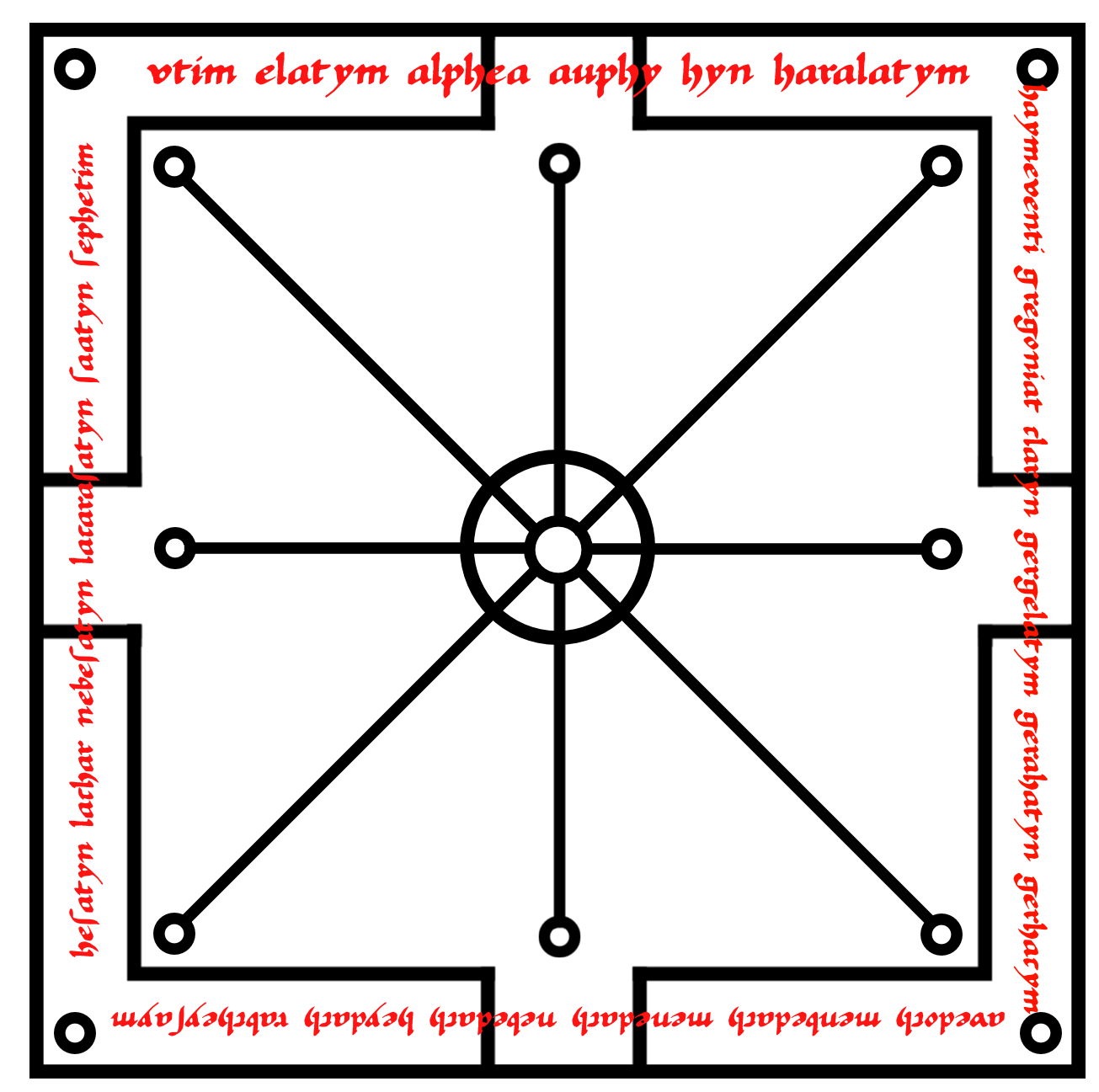
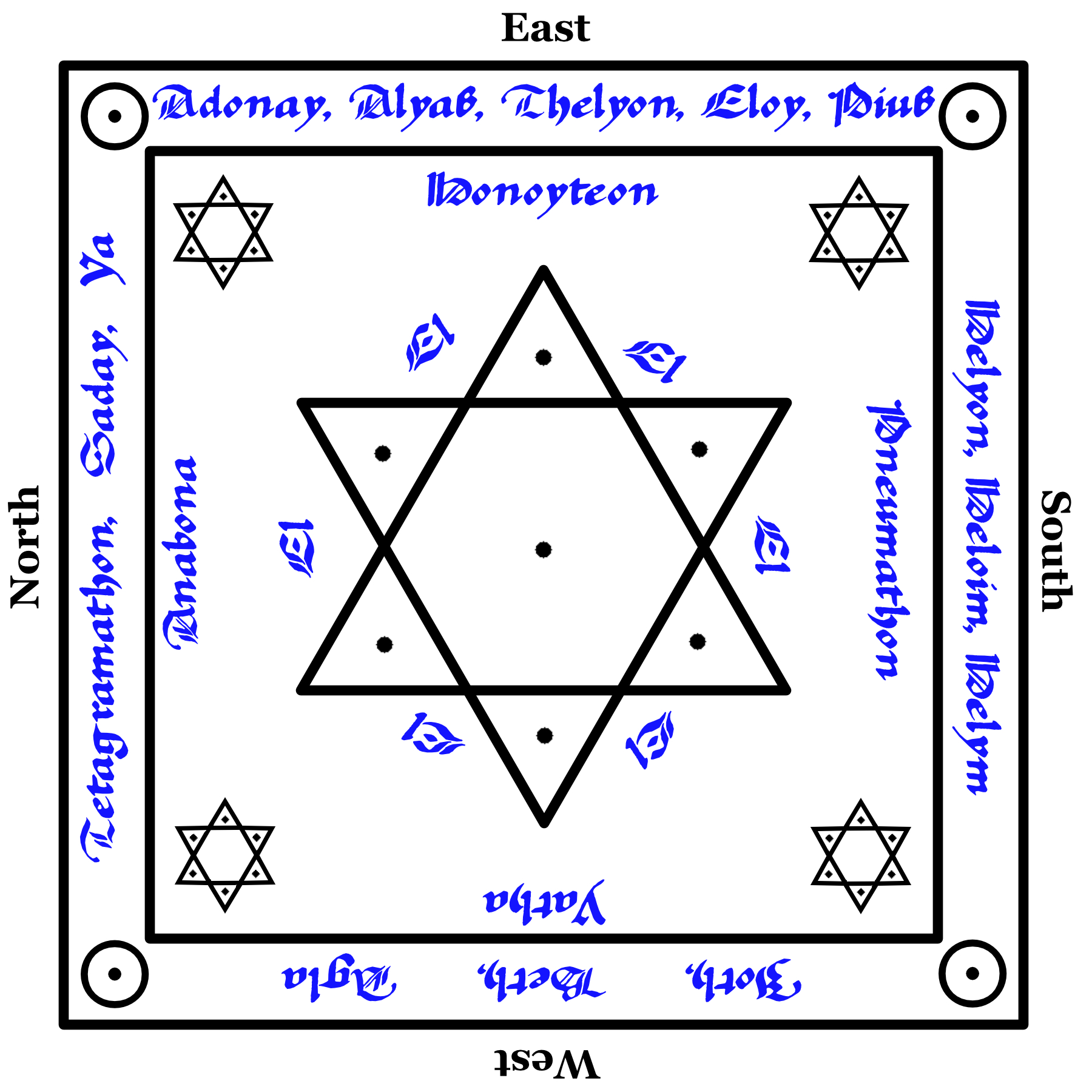

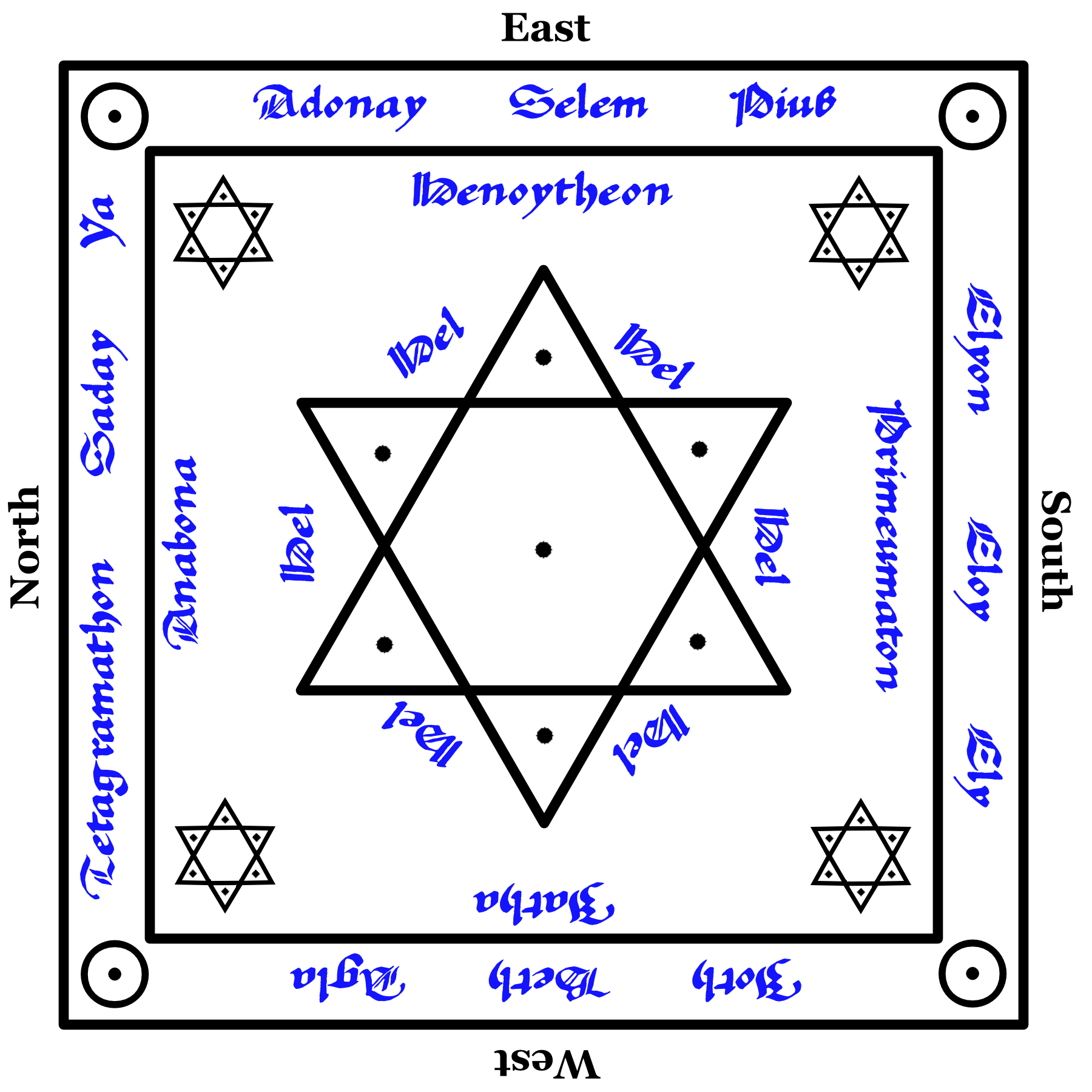

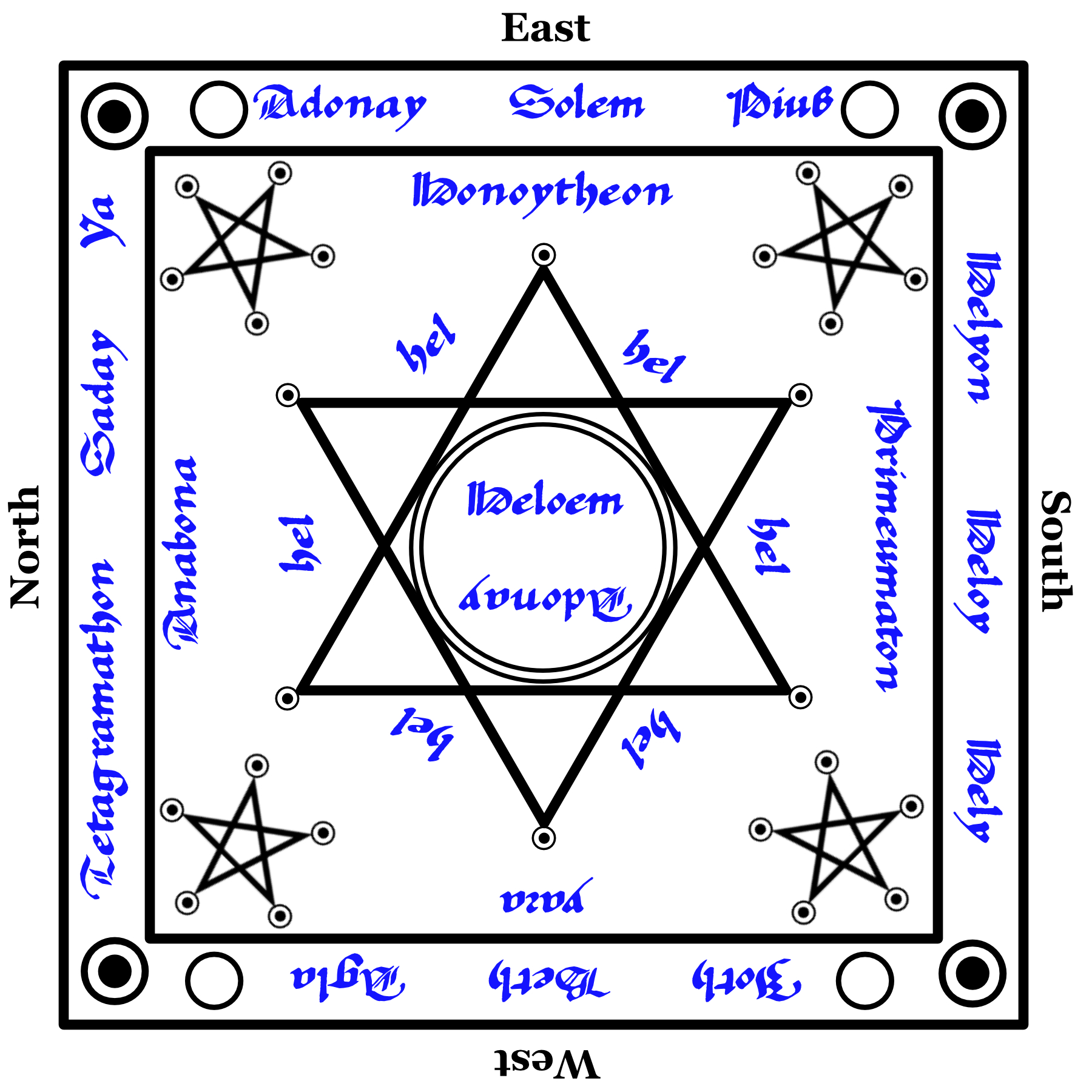
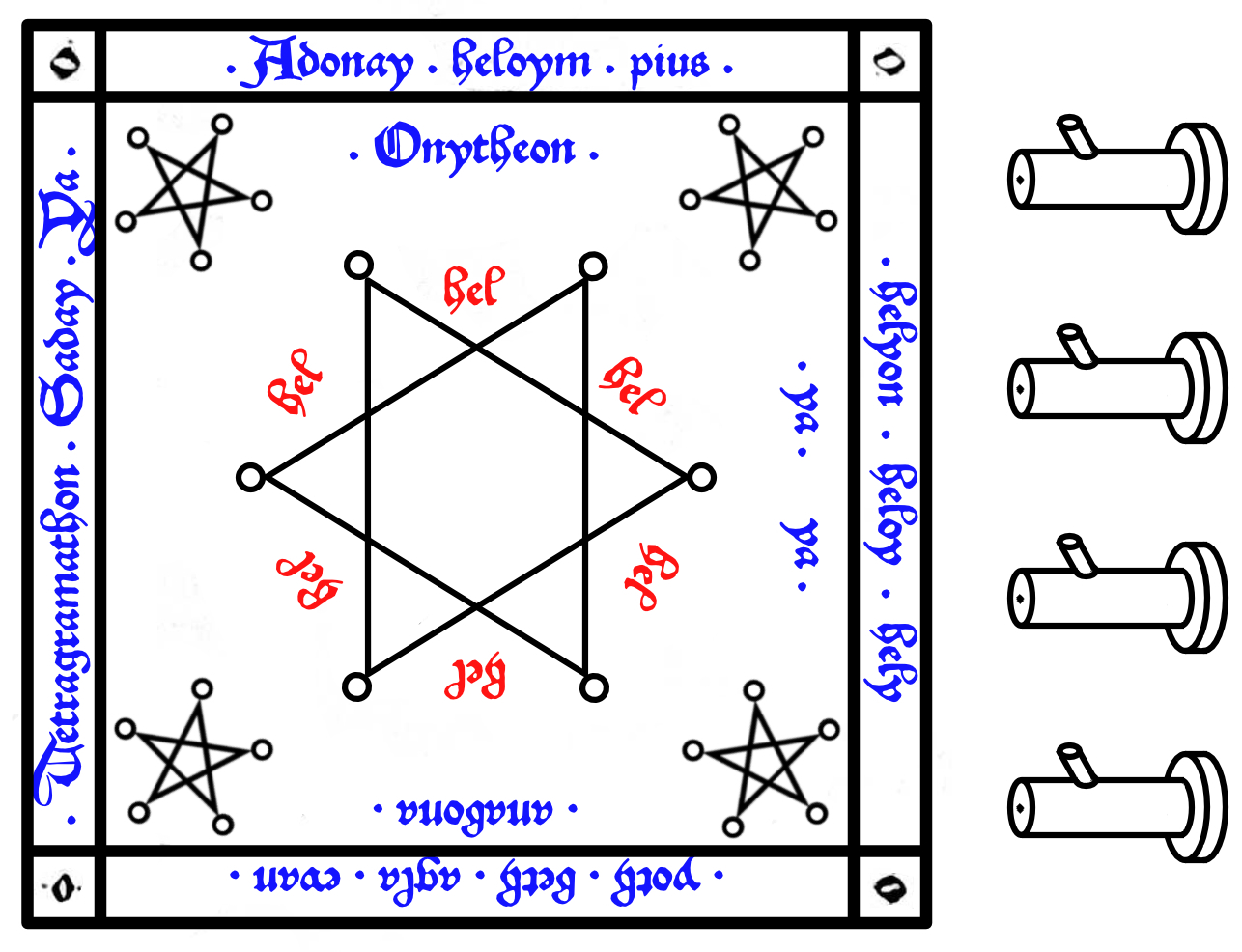
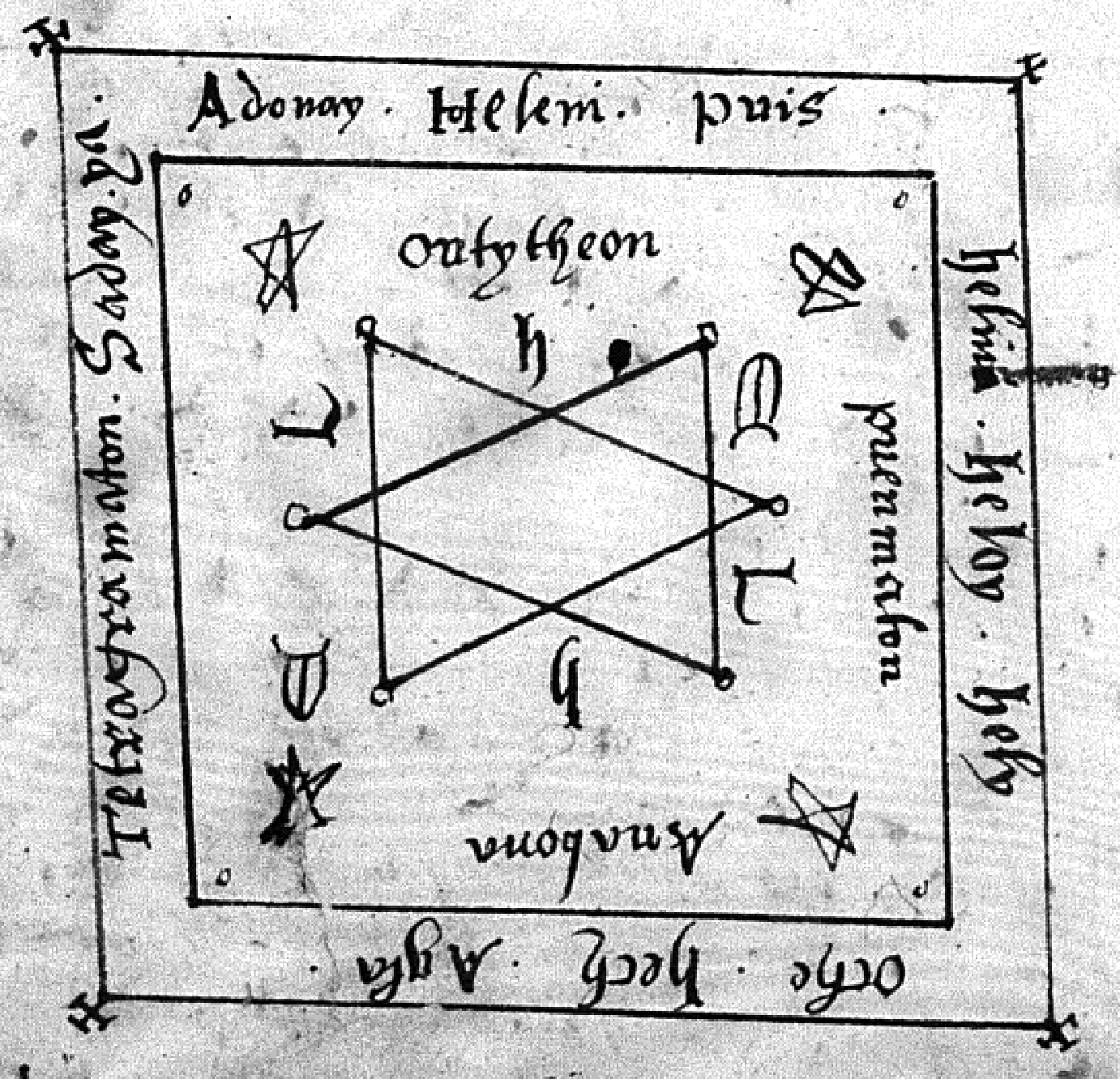
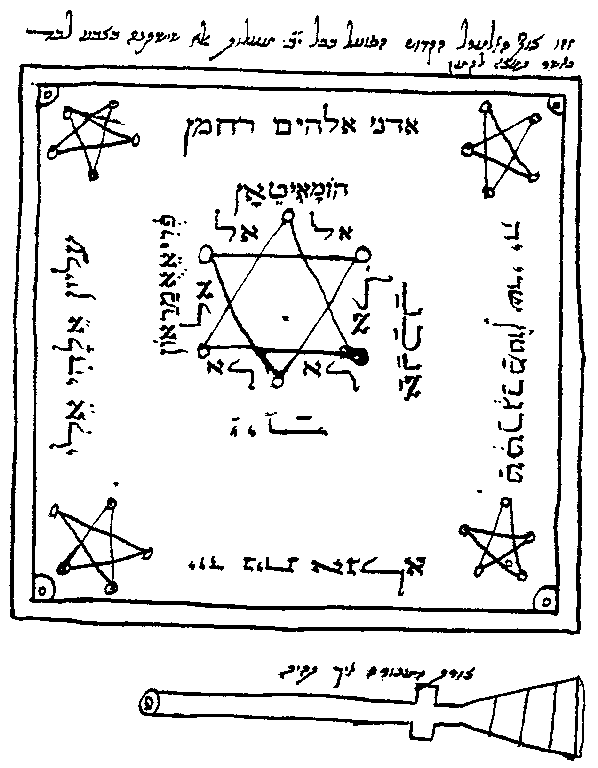
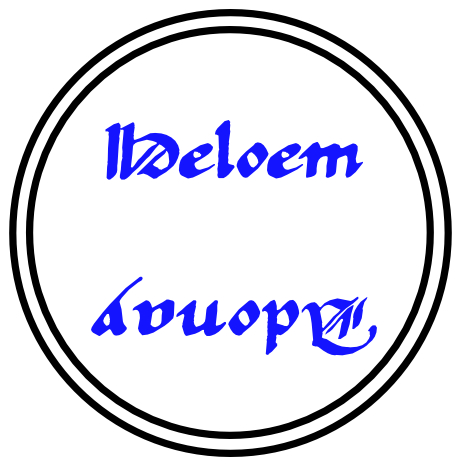
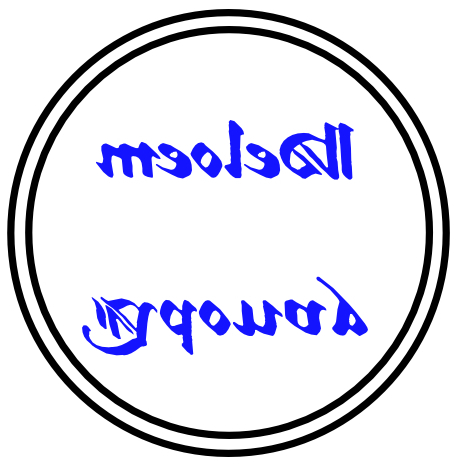
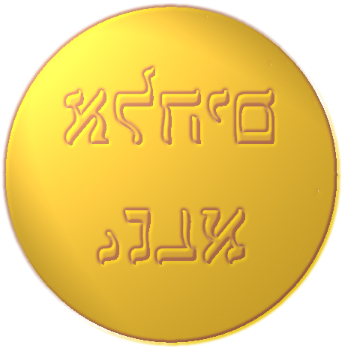
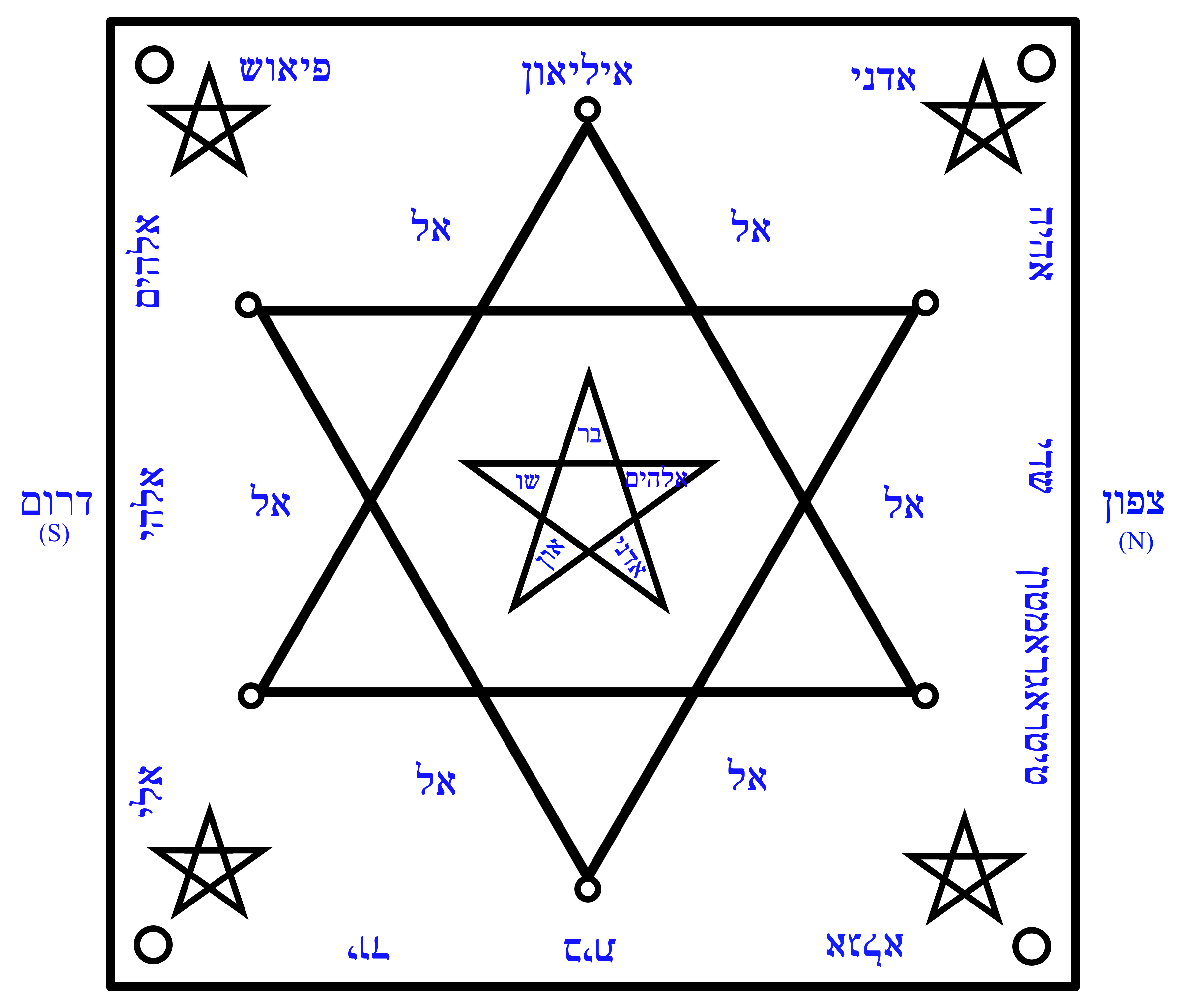
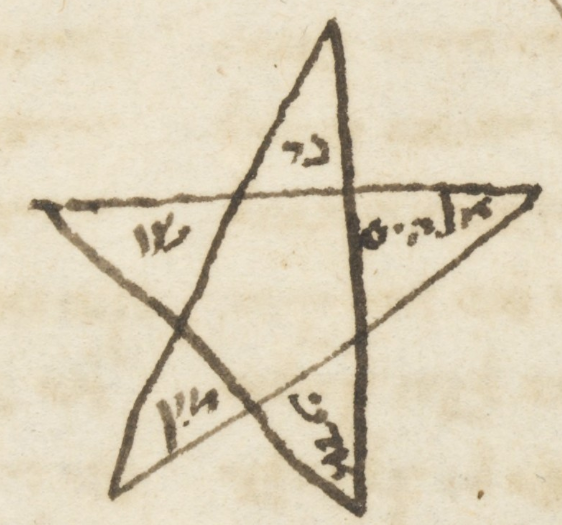
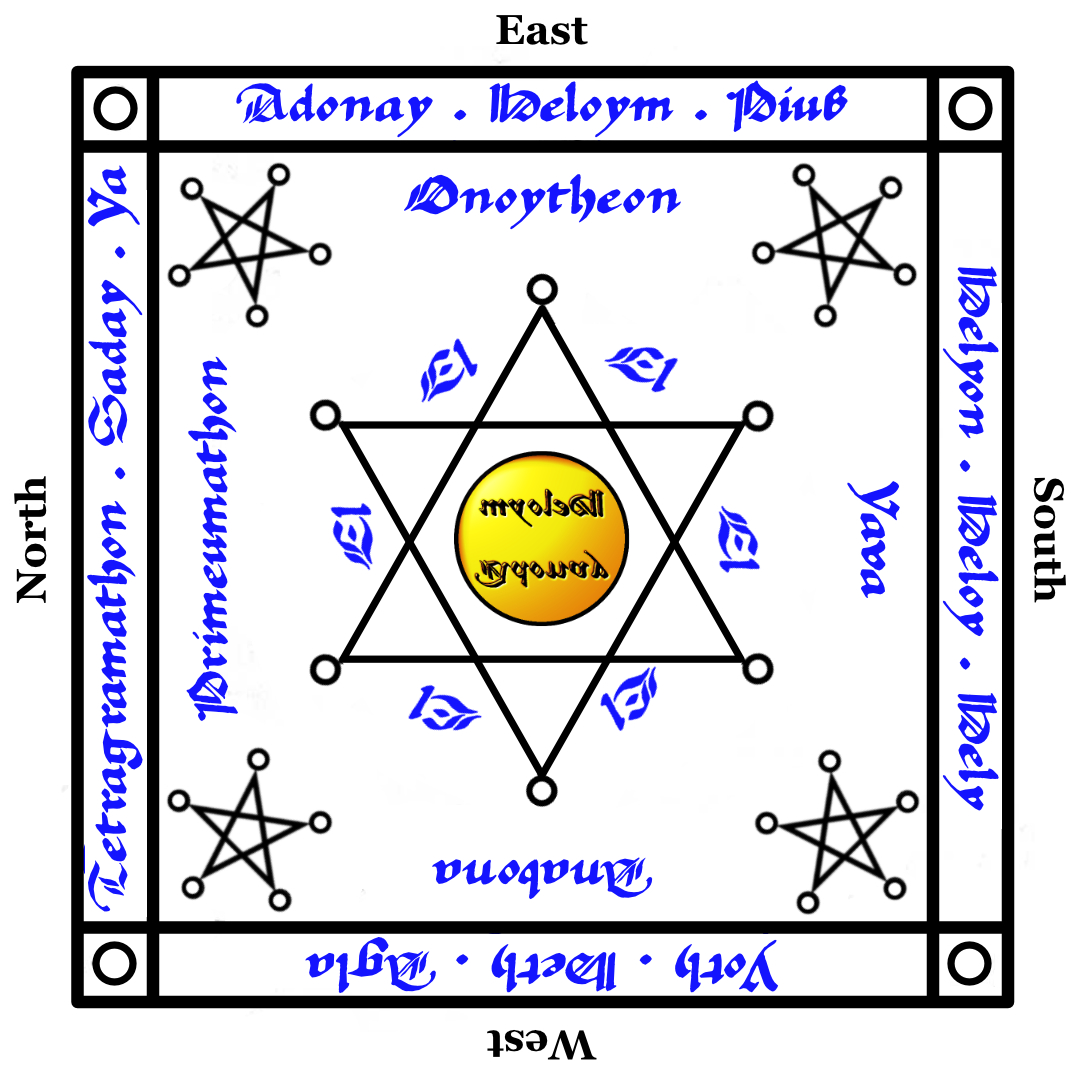
![[pentacle]](../gifs/pentacle.jpg) , and betwixt
the first and [the] other quarters write this
word, Anabona and in the midle of the Almadel make a six angled
figure and in the middest off it a Triangle wherin must be written
these names of god,
, and betwixt
the first and [the] other quarters write this
word, Anabona and in the midle of the Almadel make a six angled
figure and in the middest off it a Triangle wherin must be written
these names of god,
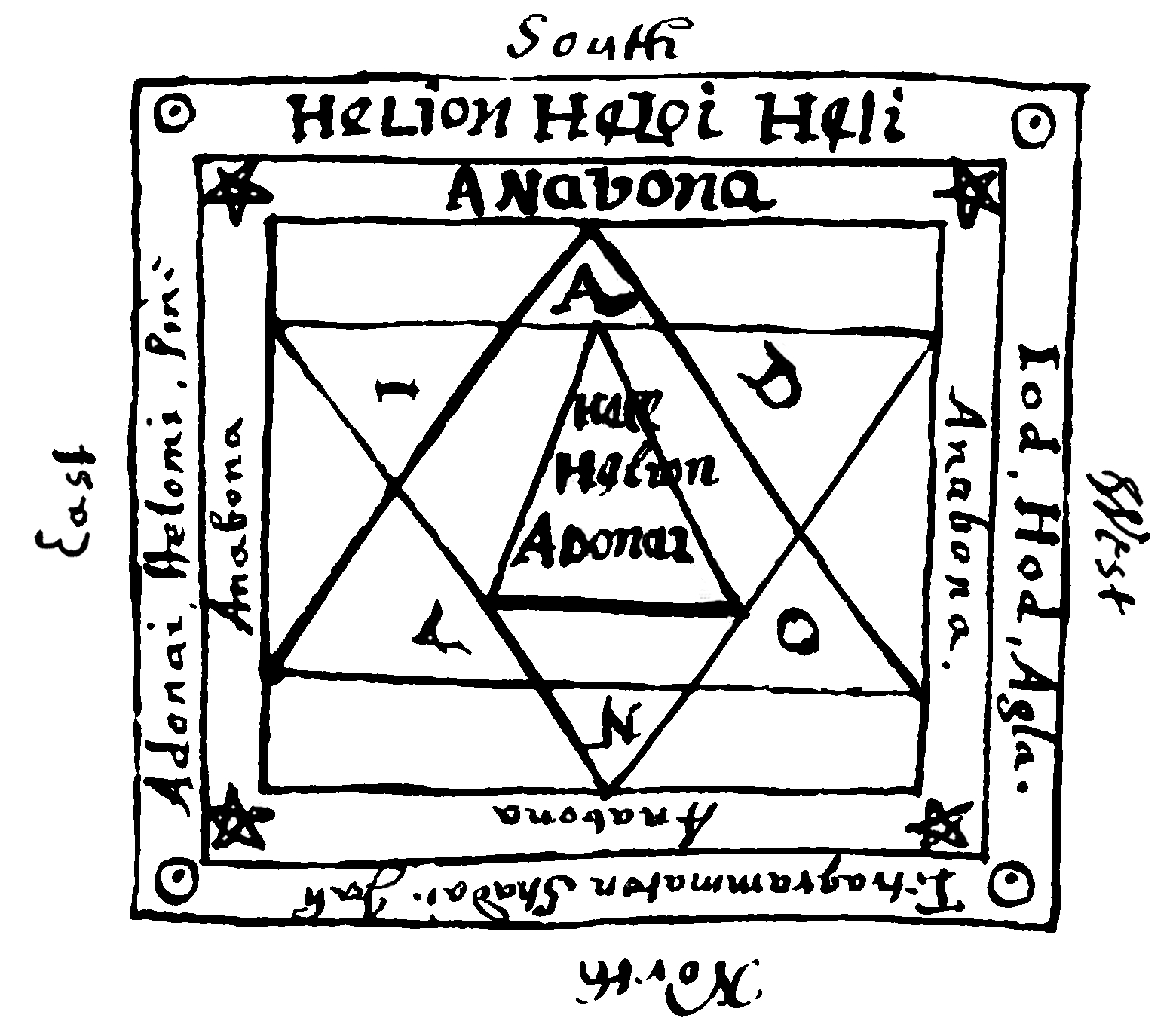
![[Sun]](../gifs/sol.gif) is entered
is entered